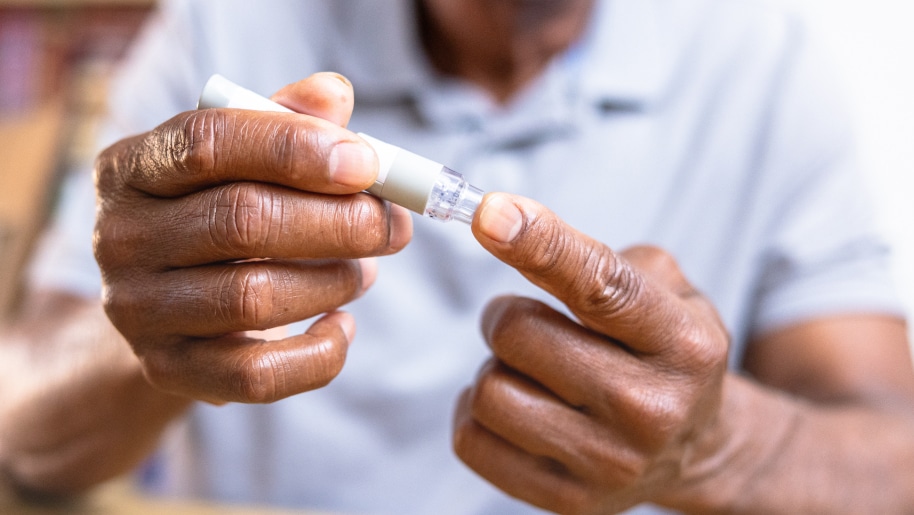Top 5 Smart Ways to Effectively Dye Your Hair in 2025
Dyeing your hair can be a fun and efficient way to express your style, but it's essential to do it correctly to avoid damage and achieve your desired look. As trends evolve in 2025, understanding the best practices for hair dyeing becomes crucial for any enthusiast. Whether you prefer permanent hair dye for a long-lasting change or semi-permanent options for a temporary look, knowing how to properly dye your hair is vital. This article will explore five smart methods for effectively dyeing your hair while ensuring hair health and color vibrancy.

We will discuss various hair dyeing techniques, how to prepare your hair before dyeing, and post-dye hair care to ensure lasting results. Additionally, we'll emphasize the importance of choosing the right hair color and provide tips on achieving beautiful results at home or in a salon setting. Prepare to embark on your hair color transformation journey with our essential hair dye tips for 2025!
Essential Hair Dyeing Techniques for the Perfect Look
Building on the importance of choosing the right techniques, the following methods can help you achieve your desired hair color effectively.
1. Comparing Permanent vs. Semi-Permanent Hair Dye
Understanding the differences between permanent and semi-permanent hair dye is crucial for making an informed choice. Permanent hair dye provides long-lasting results that can cover grey hair effectively. It's ideal for a complete color transformation or when you want to achieve a natural look. On the other hand, semi-permanent hair dye allows for more flexibility, enabling you to enjoy different shades without the commitment of permanence. This option is perfect for those experimenting with color or offering an easy touch-up between salon visits.
2. The Art of Balayage and Ombre Techniques
Balayage and ombre techniques have gained immense popularity for their stunning results. Balayage is a freehand hair coloring technique that creates a soft, sun-kissed look by painting the dye directly onto the hair strands. This method is perfect for blending colors and achieving a natural gradient that complements your features. Ombre, on the other hand, involves a more defined color transition from dark to light, creating dramatic effects. Both techniques provide dimension and character to your hairstyle while maintaining a natural appearance.
3. Color Depositing Conditioners for Subtle Changes
If you prefer subtle changes without the long-term commitment, color depositing conditioners are an excellent option. These products not only help to enhance your current hair color but also provide nourishment and hydration. They're perfect for maintaining vibrancy between dye jobs, and you can easily switch up shades based on your seasonal preferences. These conditioners often come in a variety of shades, allowing you to achieve everything from vibrant hues to the perfect blend for your highlights.
4. Expert Tips for Achieving Highlights
When opting for highlights, the technique you choose can significantly affect the final appearance. Using foils is a popular method that allows for precise placement of color, especially for those looking for a more defined look. Alternatively, freehand techniques similar to balayage can create a softer effect. Always consult a professional if you’re unsure, as they can help you select the best method and shades that flatter your skin tone.
5. DIY Hair Dye Application: Step-By-Step
If you're opting for at-home hair dye application, preparation is key. Start by conducting a patch test to avoid allergic reactions. Next, gather your supplies: high-quality dye, gloves, brushes, and a mixing bowl. Section your hair to ensure even application and carefully follow the instructions on the dye package. After development time, rinse thoroughly with a color-safe shampoo. Following these steps will help you achieve professional-looking results from the comfort of your home.

Preparing Your Hair for Dyeing: The Must-Know Steps
With your dyeing techniques in place, let’s dive into pre-dye preparation, ensuring your hair is healthy and ready for the color transformation.
1. Pre-Dye Treatments That Make a Difference
Before dyeing, consider implementing pre-dye treatments like deep conditioning or hair masking. These treatments provide essential hydration and strengthen your hair, reducing breakage during the dyeing process. Avoid washing your hair with shampoo on the day of dyeing; natural oils will protect your scalp and help the dye adhere better.
2. Understanding Hair Porosity
Hair porosity plays a vital role in how well your hair absorbs dye. If you have high porosity hair, it tends to absorb dye quickly but also loses color faster. Conversely, low porosity hair may need extra heat or time for dye absorption. Understanding your hair's porosity will help you choose the right product and application technique, ensuring a more successful dyeing experience.
3. Consider Your Hair’s Current Color
Your current hair color can significantly affect the final results of your dye job. For instance, if you're transitioning from dark to light, you may need to use a hair bleach first. Understanding color theory can help you predict how your chosen shade will turn out; this knowledge ensures you select a dye that achieves your desired result effectively.
4. Patch Test Before You Dye
Never skip the patch test by applying a small amount of dye on your skin 48 hours before application. This precaution can save you from unexpected allergic reactions. It also allows you to see how your hair responds to the dye, helping you assess the potential results.
5. Setting Realistic Expectations
Before embarking on your hair dye journey, set realistic expectations about the results you can achieve. Understand that achieving specific shades may require multiple sessions and specific techniques. Communicating with your stylist or researching at-home methods can aid in setting a feasible timeline for your color transformation.
Post-Dye Hair Care: Keeping Your Color Vibrant
Transitioning to post-dye care is just as essential as preparation. Proper aftercare will help maintain your new look and keep your hair healthy.
1. Choosing the Right Hair Care Products
Utilizing color-safe shampoos and conditioners should be a priority in your post-dye hair care routine. These products are designed specifically to protect your color and nourish your hair, helping to prevent fading and drying out. Look for products with gentle formulas and added moisturizers.
2. Deep Conditioning for Healthy Locks
Incorporating deep conditioning treatments post-dye is crucial for restoring moisture and shine. Frequent deep conditioning will help reduce the dryness that often accompanies dyeing while promoting strong, vibrant hair. Don't forget to select conditioners that cater specifically to colored hair and offer color protection.
3. Timing for Next Dye Jobs
Knowing how often to dye your hair is vital to maintain its health. Generally, it's recommended to wait 6-8 weeks between dyeing sessions, especially if using permanent dye. For semi-permanent dyes, you might touch up every 4-6 weeks. This timeline allows your hair to recover and prevents excessive damage from chemical processes.
4. Recognizing and Treating Damage
If you notice your hair becoming brittle or dry after dyeing, it may require specialized treatment. Using bond-repairing treatments can significantly revive damaged hair, ensuring it remains healthy and vibrant. Look for products that offer protein- and moisture-rich ingredients.
5. Dealing with Fading Color
Color fade is a common issue with dyed hair. To combat fading, limit your hair’s exposure to sunlight and use products that shield it from UV rays. Additionally, consider using a color deposit conditioner to refresh your hue between applications, keeping your color vibrant longer.
Choosing the Right Hair Color: Tips and Ideas
Choosing the perfect hair color can be challenging. Here are some practical strategies to help you find the right match for your style and skin tone.
1. Understanding Undertones for Color Selection
Determining your skin’s undertone is essential for selecting a hair color that complements your appearance. Generally, warm undertones look best with golden or copper-hued dyes, while cool undertones pair better with ash tones. Finding your undertone can help narrow down your choices and ensure you love your new look.
2. Current Hair Color Trends
Stay updated on the latest hair color trends to find inspiration for your next look. In 2025, expect to see rich, multi-dimensional colors like deep mahogany, icy pastels, and natural blends gaining popularity. Experimenting with trendy shades can make your hair stand out and express your individuality.
3. Consulting with a Professional
If you're unsure about choosing a color, consider consulting a professional. Hair colorists have extensive experience and can guide you toward styles that suit your features. Don’t hesitate to ask for a color consultation before committing, as professional advice can save you from unsatisfactory results.
4. Experimenting with Temporary Colors
Temporary hair colors are an excellent way to experiment without the commitment of permanent dye. These options wash out after a few washes, allowing you to play with different shades and see what best suits your style before making a permanent decision.
5. Customizing Your Color Shades
Consider customizing your dye by mixing shades for a unique look. This technique allows you to create a color that perfectly matches your style and preference. Begin with a base color and gradually add small amounts of other hues to find the ideal blend that's truly yours.
Common Hair Dye Mistakes to Avoid
Finally, let’s review common hair dye mistakes that can easily be avoided for a successful hair transformation.
1. Skipping the Patch Test
Never skip the patch test, as mentioned; it's one of the most critical steps in the dyeing process. Skipping it might lead to unexpected allergic reactions, which can be severe and uncomfortable. Always prioritize safety first!
2. Ignoring Instructions
Always read and follow the hair dye instructions carefully. Each product comes with specific guidelines on application and timing that will yield the best possible results. Overestimating application time can lead to severe hair damage.
3. Over-Dyeing
One of the most common mistakes is over-dyeing, especially if your hair color fades quickly. Avoid the temptation to dye your hair too frequently. Instead, establish a routine that allows sufficient time between applications to keep your hair healthy.
4. Not Using the Right Tools
Using the correct tools, such as professional dye applicators, brushes, and gloves, can significantly affect the outcome of your hair color. High-quality brushes aid in even application, whereas gloves prevent unwanted staining on your hands.
5. Neglecting Post-Dye Care
Post-dye care is as vital as preparation. Neglecting your new color can lead to rapid fading and potential damage, undermining your coloring efforts. Always invest time in nurturing your hair after dyeing to keep it looking vibrant and healthy.
Q&A Section: Hair Dyeing Queries Answered
1. How often should I dye my hair?
Generally, it's recommended to wait 6-8 weeks between permanent dye jobs and 4-6 weeks for semi-permanent. This timing allows your hair to recover and maintain its health.
2. What should I do if I have an allergic reaction to hair dye?
If you experience an allergic reaction, rinse the affected area immediately and consult a healthcare professional. Always conduct a patch test before dyeing to prevent severe reactions.
3. Can I dye my hair if it's damaged?
While it’s not ideal to dye damaged hair, if necessary, consider using a deep conditioning treatment prior to and after dyeing to minimize further damage.
4. How can I maintain vibrant color after dyeing?
Utilizing color-safe shampoos, deep conditioners, and limiting sun exposure can significantly aid in maintaining vibrant hair color. Additionally, regular touch-ups with color deposit conditioners can help prolong vibrancy.
5. Are there safer alternatives to chemical hair dyes?
Yes, there are several organic and eco-friendly hair dye options available. These dyes often contain natural ingredients that pose lower risks of allergic reactions and damage.
With all this information at your disposal, you're now equipped to approach hair dyeing confidently and effectively in 2025. Remember to take care of your hair before and after dyeing for amazing results!
For further reading on hair dyeing techniques, visit this link, and for tips on post-dye care, check here.
